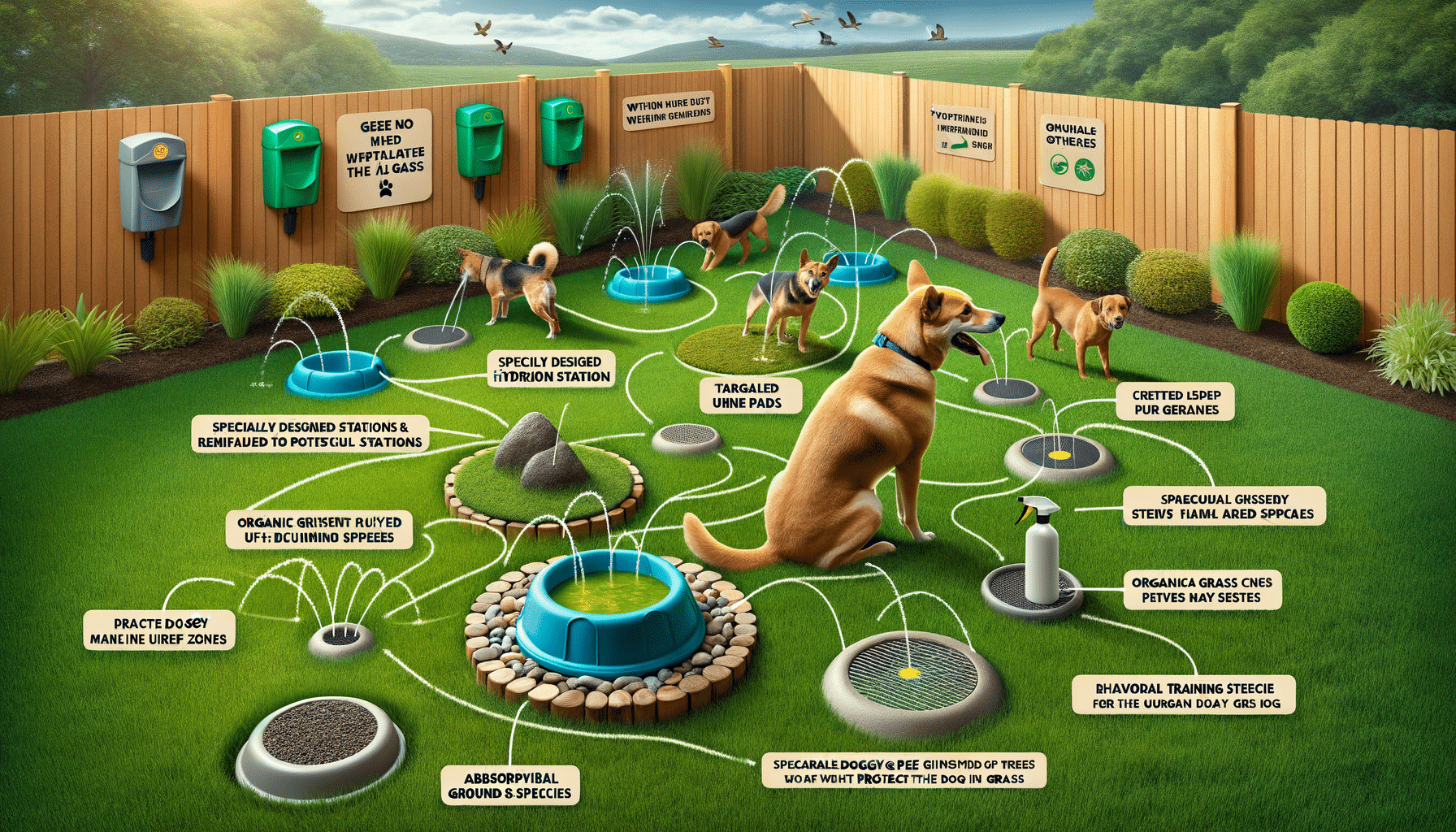
Dog Urine and Lawn Health: 10 Common Approaches People Use to Protect Grass
Understanding the Impact of Dog Urine on Lawns
Dog urine spots on lawns are a common concern for many pet owners and garden enthusiasts. The high concentration of nitrogen in dog urine acts much like a fertilizer, but in excessive amounts, it can cause lawn burn, leading to unsightly patches of brown grass. Understanding why these spots occur is the first step in addressing the problem effectively.
Nitrogen is essential for plant growth, but when concentrated in small areas, it overwhelms the grass, causing it to die. Female dogs are often blamed more than males because they tend to squat and urinate in one spot, whereas males may spread their urine over a larger area. However, both genders can contribute to the issue.
Other factors that can exacerbate the problem include the dog’s diet, the type of grass, and environmental conditions. Some grasses are more resilient to nitrogen overload, while others are more susceptible. Recognizing these variables helps in tailoring a solution that works best for your lawn.
Preventive Measures to Protect Your Lawn
Prevention is key to managing dog urine spots on your lawn. Here are some practical approaches:
- Train your dog to urinate in a designated area, preferably one with gravel or mulch.
- Water the area immediately after your dog urinates to dilute the nitrogen concentration.
- Provide your dog with a balanced diet to reduce the nitrogen content in their urine.
- Consider using lawn treatments that are designed to neutralize the effects of dog urine.
Training your dog can take time and patience, but it is effective in the long run. Diluting the urine by watering the spot can significantly reduce damage, especially if done promptly. Additionally, some commercial lawn treatments offer solutions specifically for pet owners, helping to maintain the health and appearance of your grass.
Choosing the Right Grass for Dog-Friendly Lawns
The type of grass you choose can make a significant difference in how well your lawn withstands dog urine. Some grasses are more tolerant of nitrogen and foot traffic than others. Here are a few options:
- Perennial Ryegrass: Known for its quick germination and resilience.
- Fescue: Offers excellent drought resistance and is tolerant to wear.
- Bermudagrass: Thrives in warm climates and is highly durable.
Selecting the right grass type depends on your climate and how much time your dog spends outdoors. Perennial ryegrass and fescue are popular choices in cooler climates, while Bermudagrass is ideal for warmer regions. Each type has its strengths, and choosing the right one can help minimize the appearance of urine spots.
Repairing Damaged Lawn Areas
Even with preventive measures, some damage may still occur. Repairing these spots involves a few steps:
- Rake away dead grass and debris from the affected area.
- Apply a layer of topsoil to promote new growth.
- Seed the area with a grass type that matches your lawn.
- Water regularly to encourage germination and growth.
Patience is essential during the repair process. It may take several weeks for the new grass to establish itself fully. Regular maintenance, such as watering and mowing, will help the new grass blend seamlessly with the existing lawn.
Additional Tips for Maintaining a Healthy Lawn
Beyond addressing dog urine spots, maintaining a healthy lawn involves consistent care and attention. Here are some tips:
- Regularly aerate your lawn to improve soil health and water absorption.
- Fertilize appropriately, considering the existing nitrogen levels from dog urine.
- Keep your lawn mowed to the recommended height for your grass type.
- Monitor for pests and diseases that can affect lawn health.
Aeration allows air, water, and nutrients to penetrate the soil, promoting healthy root growth. Fertilizing should be done with care, as too much nitrogen can exacerbate urine spots. Regular mowing and monitoring will keep your lawn looking its best and prevent small issues from becoming major problems.